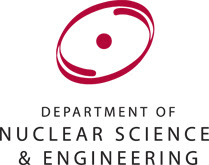Nuclear Weapons 355 - MIT Scientists Are Developing A New Method To Verify Nuclear Warheads
Great progress has been made in nuclear disarmament since the height of the Cold War when both the U.S. and Russia had tens of thousands of nuclear warheads. Now they are down to about five thousand warheads each.
One of the big problems with nuclear disarmament is verification. The exact design of nuclear warheads is highly classified in all nations that possess them. How do you prove that a warhead has been destroyed without being able to examine the detail of its construction and the exact radioactive material that it contains? Up to this point, disarmament efforts have been focused on the elimination of delivery systems which are much easier to verify.
Scientists at MIT have published papers in Nature Communications and The Proceedings of the National Academy of Sciences that lay out their ideas for two different variations on a new verification system for nuclear warheads. Areg Danagoulian, the senior author of both papers, is a MIT assistant professor of nuclear science and engineering.
There are two essential elements in the construction of a nuclear warhead. The exact mixture of weapons grade radioactive materials and the dimensions of the core or “pit” that contains the radioactive materials. This is top secret military information.
Measuring the radiation given off by a supposed nuclear warhead is not enough to prove that it is really a nuclear warhead. It could a dummy warhead that contains non-weapons grade nuclear material that gives off the characteristic signature of a real warhead. There are isotope-sensitive resonant processes that can be used to analyze the exact isotope mixture and the shape and size of the pit but this would reveal the information that all nuclear armed nations want to keep secret. The MIT team came up with the idea of a physical “key” that would contain a sample of the isotopes that are in a real warhead. The group carrying out inspections of warheads would not know the exact mixture in the key.
One way to think about this system would be to substitute different colors for the different isotopes. The warhead would be visualized a combination of colors. A filter could be created that would combine the compliments of the colors representing the warhead. If the filter was laid over the sheet of colors representing the warhead, the result would be uniform black. If the warhead was a fake, then there would be visible colors when the filter was applied.
In the MIT system, the colors are replaced by isotopes. The country that produced a warhead would also produce the filter or key. The key would be a cryptographic reciprocal or a cryptographic foil. The warhead being inspected could be hidden inside a black box to prevent revealing its construction.
In one version of the MIT system, the warhead is lined up with the foil and a beam of neutrons applied. A detector then reveals the isotope-specific resonant signatures. The neutron scan is rendered as a visible image. If the image is blank, the warhead is real. If the warhead is not real, then the image shows details of its construction.
The alternative MIT system would use photons instead of neutrons to scan the foil and warhead. Instead of a visible image being generated, there would be a spectrogram. Both of these processes generate a Zero Knowledge Proof in which a nuclear armed nation can prove compliance without revealing any further information about the details of the construction of their warhead.
So far, the MIT team has only verified their design through sophisticated computer simulations. The next step is to test actual fissile materials at one of the U.S. national nuclear laboratories.
